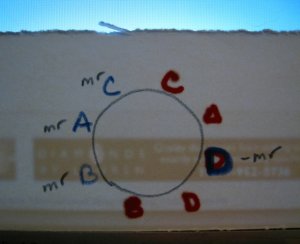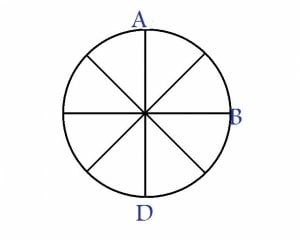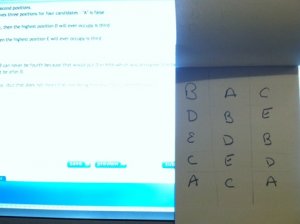mayerling
Ideal_Rock
- Joined
- Mar 4, 2010
- Messages
- 2,357
PSers, I need help!
I'm studying for an exam I have to take soon (you can call it IQ, aptitude, logic, whatever really), and it involves figuring out brain teasers. I'm going over past papers to try and get myself ready and I'm having trouble with one particular question. Could anyone help? Here goes:
Four couples (Mr and Mrs A, Mr and Mrs B, Mr and Mrs C, and Mr and Mrs D) are seated around a round table, and each person is equidistant from the next person. They are seated according to the following rules:
a. Mr and Mrs B are not seated next to Mr and Mrs C
b. Mr and Mrs C are seated next to each other
c. Mr A is seated directly across from Mr D
Question:
If Mr B is seated equidistantly from Mr A and Mr D, then which of the following people could be seated directly across from him (Mr B)?
a. Mrs B
b. Mrs A
c. Mrs D
d. Mrs C
What's the answer and WHY?
I'm studying for an exam I have to take soon (you can call it IQ, aptitude, logic, whatever really), and it involves figuring out brain teasers. I'm going over past papers to try and get myself ready and I'm having trouble with one particular question. Could anyone help? Here goes:
Four couples (Mr and Mrs A, Mr and Mrs B, Mr and Mrs C, and Mr and Mrs D) are seated around a round table, and each person is equidistant from the next person. They are seated according to the following rules:
a. Mr and Mrs B are not seated next to Mr and Mrs C
b. Mr and Mrs C are seated next to each other
c. Mr A is seated directly across from Mr D
Question:
If Mr B is seated equidistantly from Mr A and Mr D, then which of the following people could be seated directly across from him (Mr B)?
a. Mrs B
b. Mrs A
c. Mrs D
d. Mrs C
What's the answer and WHY?







300x240.png)